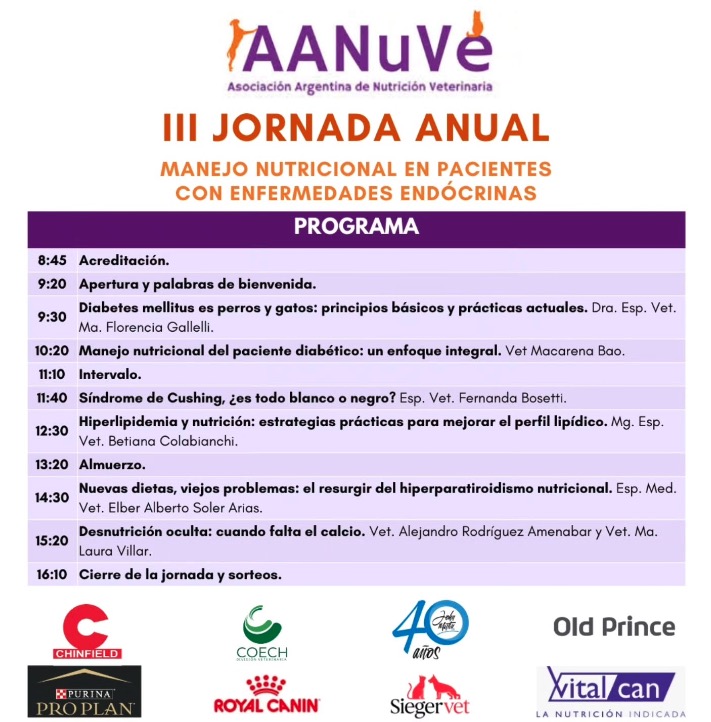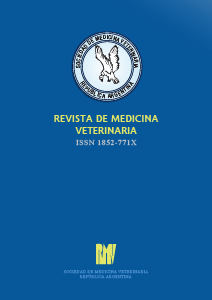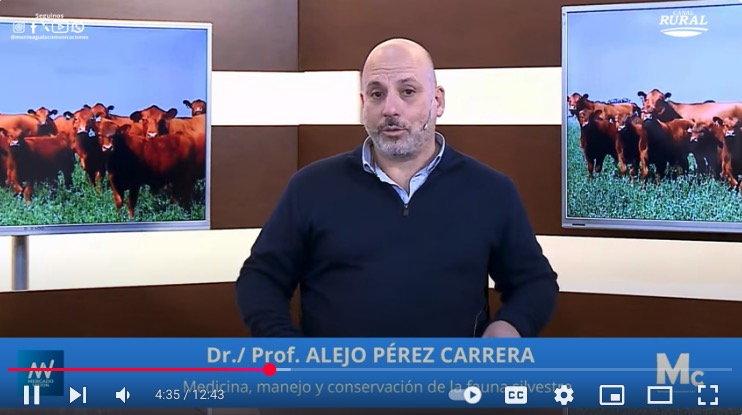III Jornada Anual de AANuVe
- Detalles
- Categoría: Interés general
- Publicado: Viernes, 12 Septiembre 2025 12:28

III Jornada Anual de AANuVe. En esta ocasión estaremos abordando el manejo nutricional en pacientes con enfermedades endócrinas junto a diversos profesionales especialistas en el tema.
¿Cuándo? El 17 de Septiembre a las 8:45
¿Dónde? En el aula 3 de la Facultad de Ciencias Veterinarias de la UBA, Av. Chorroarín 280
¿Cómo participar?
Para inscribirse pueden ingresar al siguiente link que también dejaremos fijado en nuestro perfil: https://forms.gle/hHFuYgurzffZRGj4A
Actividad sin costo para socios activos de AANuVe y SOMEVE.
Socios de AAMeFe 30% de descuento.





